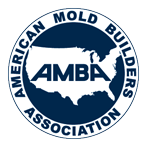By: Brent Borgerson
July 2, 2008
Drying engineering resins is crucial to obtaining desirable end products with these high–performance and often expensive resins. Thermoplastic resins are being called on to be as strong as metal and to survive in harsh environments. To achieve these end properties, a resin must be processed correctly, and one area of proper processing is to ensure that the resin is molded at or under the manufacturer’s specified maximum moisture content (%).
At Matrix Plastics Products, we are very careful (almost to the point of being neurotic) about our resin drying and dryness assurance procedures. We take a multi-pronged approach to these issues including some of the techniques and procedures as follows:
- • Drying Time: We follow the manufacturers’ recommendations as a minimum for drying time before beginning molding as well as residence time in the dryer. These steps are carefully documented for accountability.
- • Drying Temperature: Again, resin makers’ guidelines are strictly followed.
- • Dew Point Monitoring of the Dryer: Our dryers feature dew point monitors and alarms which are consistently observed. The dew point on a dryer is the best indication of the proper function of the dryer, which allows us to foresee many impending problems.
- • Moisture Analyzer: Our Quality Inspection lab features an OMNIMARK Mark IV moisture analyzer which can be used to test and verify results. This is the last line of defense and is used whenever there is any doubt about the dryness of a resin. In the case of sensitive jobs, moisture analyzing test are routinely used and documented.
A part molded with wet resin (moisture content above the manufacturer’s suggested max percentage) may not be a cosmetically unappealing part, but it is almost always a structurally weak part. Hydrolysis – the result of heating moist resin – produces an action in the resin that is essentially akin to thermal degradation. The molecular structure and integrity are affected, and a weak and/or brittle part is the result. Some of these problems are not always readily detectable, especially during the early life of the product, but premature and unexpected failures can result from molding with “less-than-dry” resin. We try our best to avoid this situation.
Written By:
Brent Borgerson
Senior Process Engineer (Older Molder)
Pat Collins
Molding Operations Manager
_horizontal_white_536x129.png)

